This post may contain affiliate sales links. Please read my disclosure policy.
Made with moist and fluffy cake, a velvety buttercream frosting, silky bavarian cream and a zesty curd filling, this is The Ultimate Lemon Layer Cake! You won’t find this much fresh lemon flavor in any other dessert.
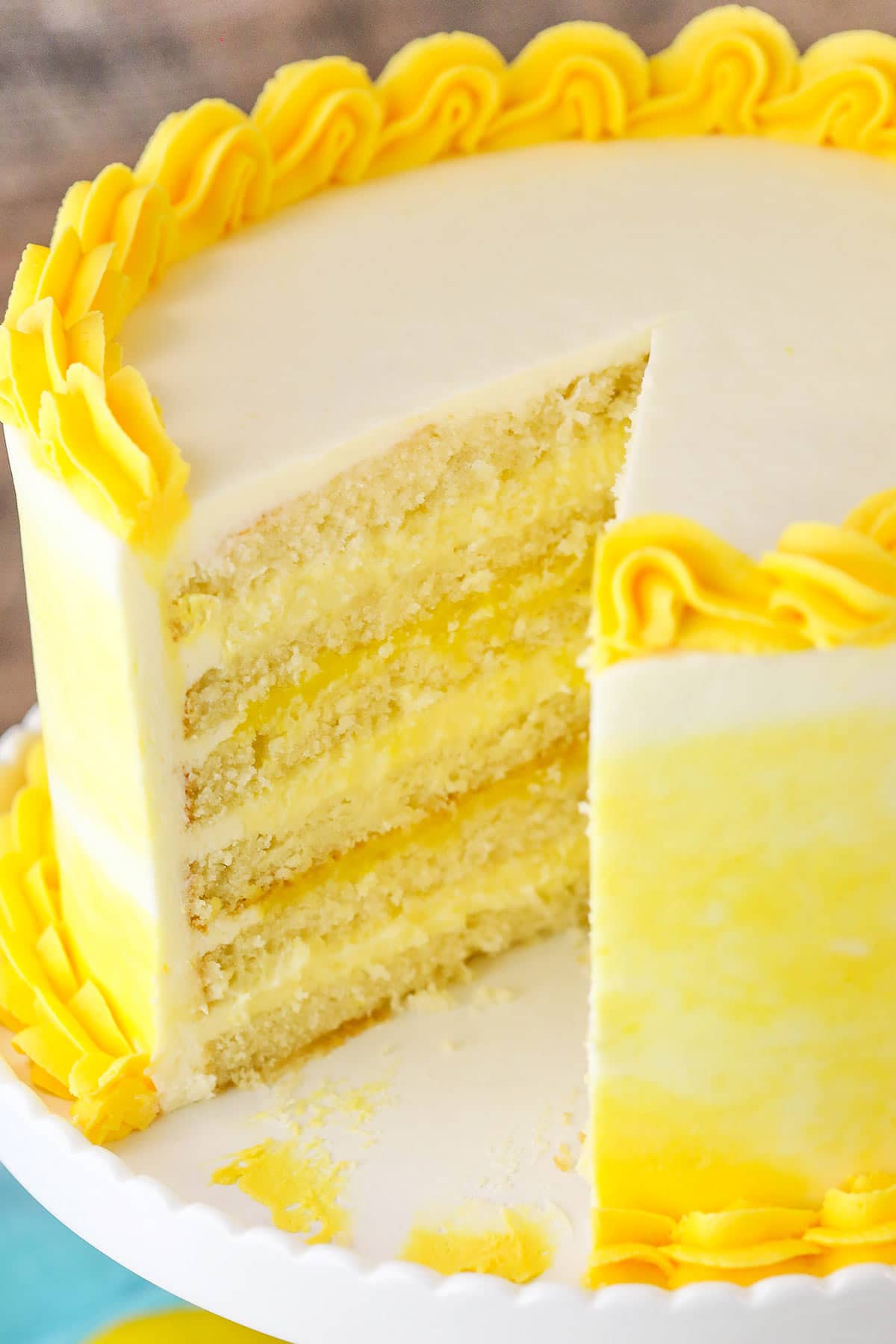
Table of Contents
- Easy Lemon Layer Cake with Lemon Buttercream
- What You’ll Need
- How to Make the Lemon Cake
- How to Make the Lemon Buttercream
- How to Make the Lemon Curd
- How to Make the Bavarian Cream
- Assembling Your Cake
- Tips for Making Lemon Layer Cake
- How to Store Frosted Cake
- Can I Freeze Lemon Layer Cake?
- Watch How To Make It
- Get the Recipe
Easy Lemon Layer Cake with Lemon Buttercream
This layer cake is a lemon lover’s dream come true. The naturally-flavored lemon cake is super tender and buttery – it has such a lovely texture to it. The fillings and the frosting are also spot-on when it comes to flavor and texture. Once you try a bite with all of them together, your mind will be blown!
Fruit-themed desserts are one of my favorite things about summer. Whether it’s a classic Strawberry Shortcake or a fancy Berry Trifle, I’m there to help devour it. There’s simply no substitute for the flavors of ripe, in-season fruits! If you’re a lover of lemon, this cake has to be the next treat you try. You’ll fall in love!
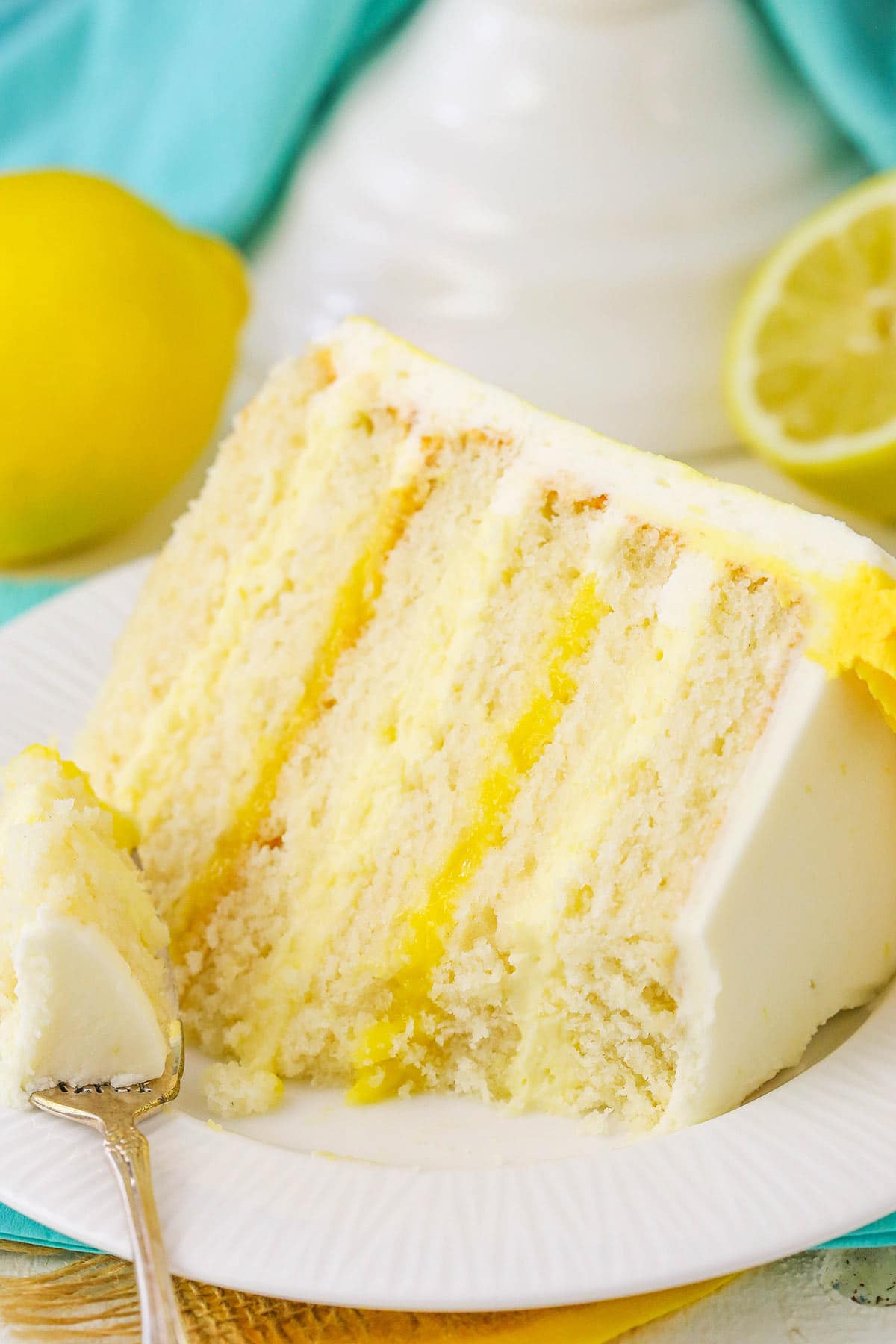
What You’ll Need
Let’s talk about the ingredients for the cake, the frosting, the curd and the bavarian cream. Each one calls for juice and zest from fresh lemons for the most fabulous citrus flavor!
For the Lemon Cake
- All-Purpose Flour: You’ll need 3 cups.
- Baking Soda & Baking Powder: This cake uses 1/4 teaspoon of baking soda and 2 3/4 teaspoons of baking powder. the combination creates the best rise and texture.
- Salt: Just a teaspoon, for flavor.
- Butter: Unsalted; bring to room temperature.
- Sugar: For a moist cake with the right amount of sweetness.
- Egg Whites: You’ll need 4 egg whites; you can use the yolks in the lemon curd.
- Vanilla Extract: This will set the stage for all that lemon-y goodness.
- Milk: Just over a cup of milk makes this cake super soft and fluffy.
- Lemon Juice: Freshly squeezed!
- Lemon Zest: About 2 tablespoons.
For the Buttercream Frosting
- Unsalted Butter: Room temperature.
- Powdered Sugar: For volume and the right consistency.
- Salt: Just a pinch.
- Vanilla Extract
- Lemon Zest
- Lemon Juice
- Yellow Gel Icing Color
For the Lemon Curd
- Lemon Juice: About 1–2 lemons’ worth.
- Lemon Zest: Finely grated.
- Sugar
- Egg Yolks
- Butter: Salted.
For the Bavarian Cream
- Powdered Gelatin: This gives the cream its custard-like texture.
- Lemon Juice
- Egg Yolks
- Heavy Whipping Cream: You’ll need 3/4 cup to start and another cup later on.
- Sugar
- Vanilla Extract
- Lemon Zest
- Powdered Sugar
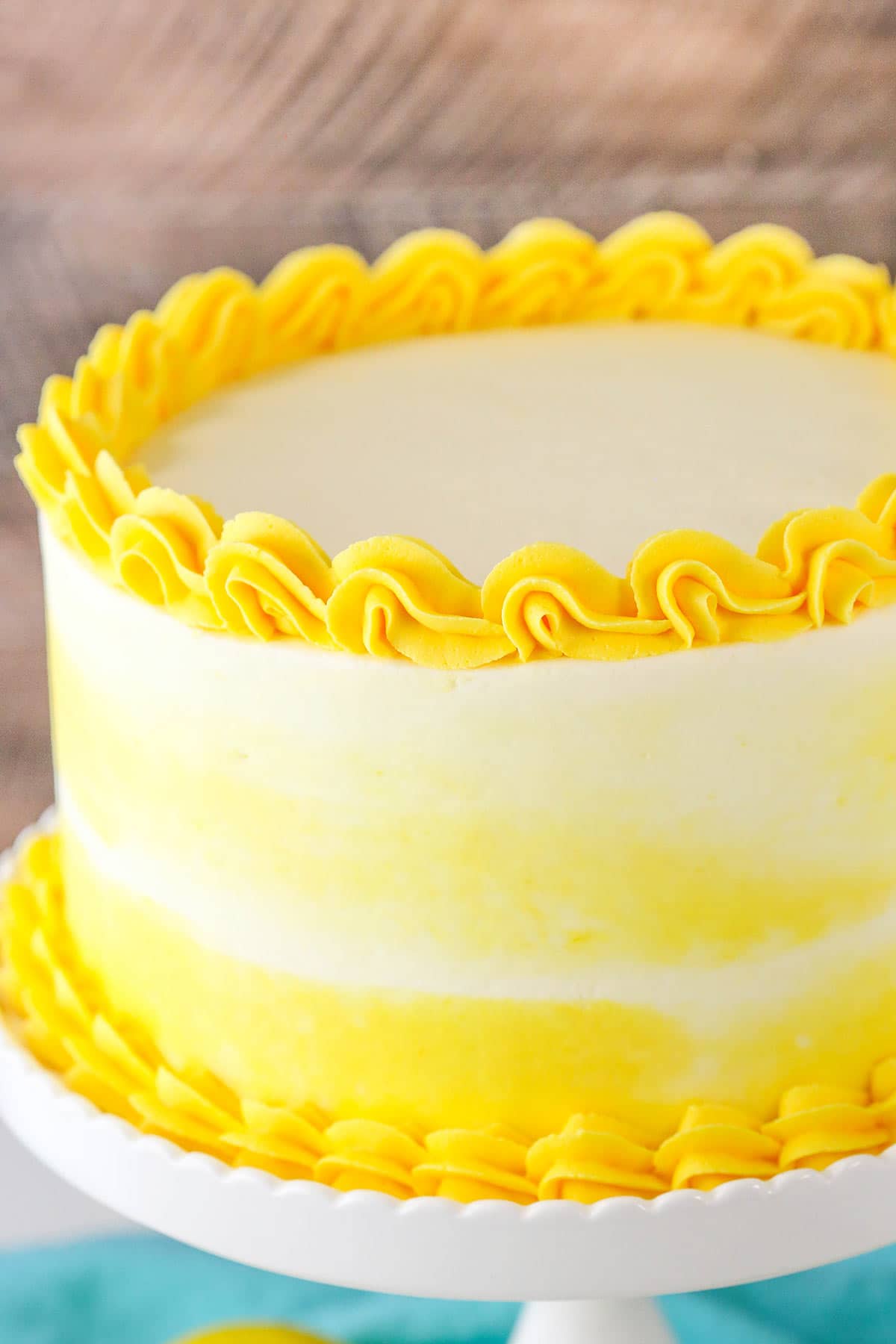
How to Make the Lemon Cake
These cake layers come together quickly and easily. You just have to combine the dry ingredients and the wet ingredients separately before mixing them together.
- Prepare for Baking: Preheat the oven to 350°F and line three 8-inch cake pans with parchment paper in the bottom and grease the sides.
- Combine Dry Ingredients: Combine the flour, baking soda, baking powder and salt in a medium-sized bowl. Set aside.
- Cream Butter & Sugar: Cream the butter and sugar in a large mixer bowl on medium speed for about 2-3 minutes, until light and fluffy.
- Add Egg Whites & Vanilla: Add the egg whites and vanilla extract and mix until well combined. Scrape down the sides of the bowl, as needed, to make sure everything is combined.
- Start Adding Dry Ingredients: Add about 1/3 of the flour mixture to the batter and beat on medium speed until incorporated.
- Add Milk & Lemon: Add about half of the milk and the lemon juice and zest and beat on medium speed until incorporated.
- Complete Batter: Continue alternating adding dry and wet ingredients, scraping down the sides of the bowl as needed, and beating until incorporated after each addition. There should be three total additions of dry ingredients and two total additions of milk. End with the dry ingredients.
- Bake: Divide the batter evenly between the cake pans and bake for 25-30 minutes, or until a toothpick inserted into the middle of the cakes comes out clean. Don’t be alarmed if the tops are a little browned – that is normal.
- Let Cool: Remove the cakes from the oven and allow them to cool for 1-2 minutes, then transfer them to a wire rack to cool completely.
How to Make the Lemon Buttercream
This lemon frosting is also super fast and simple. You’ll be whipping it up to top off all sorts of yummy treats!
- Beat Butter: Add the butter to a large mixer bowl and beat until smooth.
- Add Half of Powdered Sugar: Slowly add about half of the powdered sugar, mixing until well combined and smooth.
- Add Remaining Ingredients: Add the salt, vanilla, lemon zest and lemon juice and mix until well combined and smooth.
- Finish Adding Powdered Sugar: Slowly add the remaining powdered sugar and mix until well combined and smooth.
- Adjust to Taste: Add additional lemon juice, if needed, to thin out the frosting.
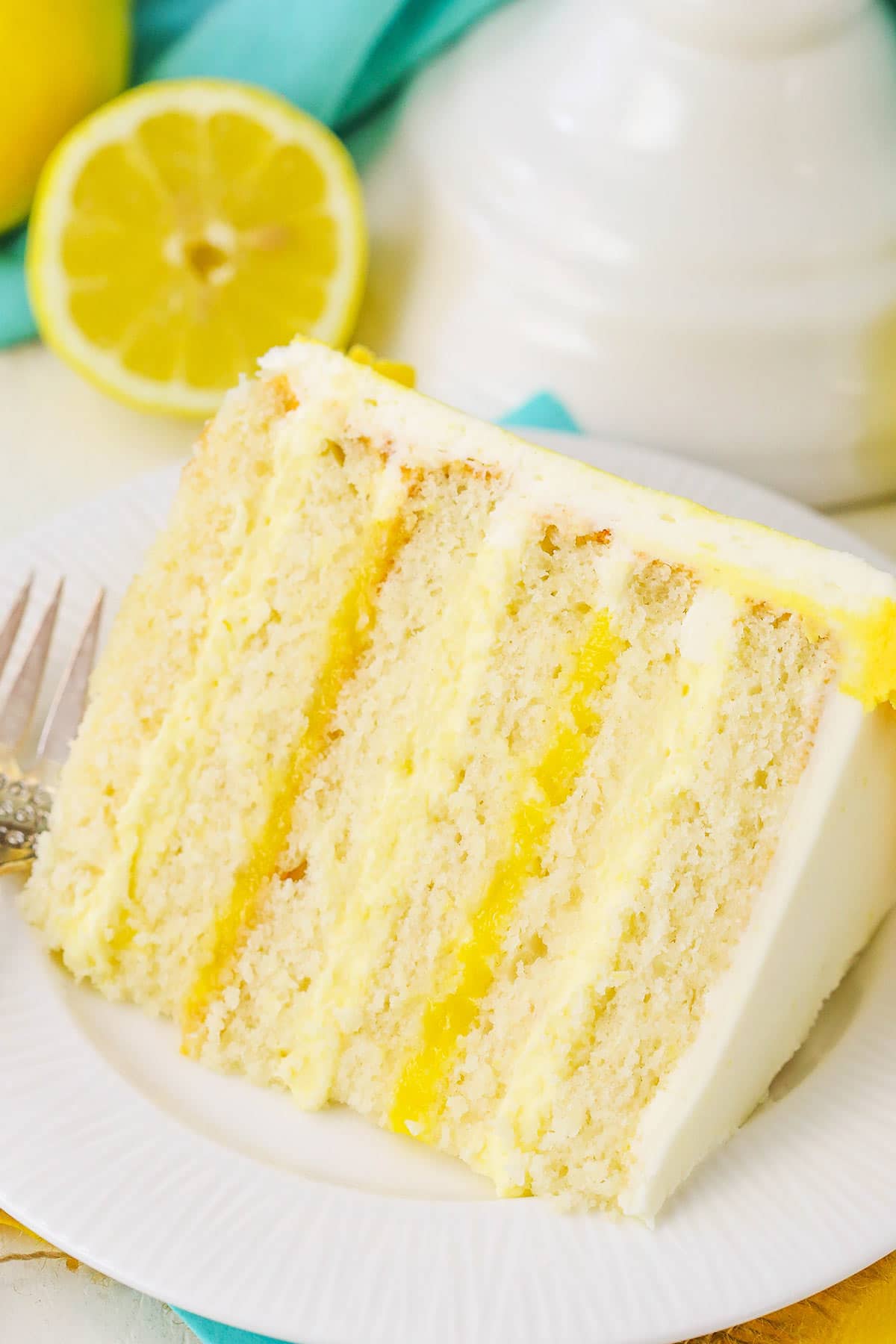
How to Make the Lemon Curd
Though this cake has plenty of lemon flavor throughout each layer, the curd is where it really shines. Here’s how to make it happen!
- Combine Ingredients: Combine all the ingredients in a double boiler or a metal bowl over a pot of simmering water.
- Thicken: Heat while whisking constantly until the mixture thickens and reaches 170-180°F, or coats the back of a spoon.
- Chill: Pour the lemon curd into a heat-proof bowl, cover with clear wrap pressed onto the the top of the curd to avoid a film developing, and refrigerate until cold and firm.
How to Make the Bavarian Cream
Last but not least, let’s discuss how to make the light and fluffy bavarian cream. As long as you’re watching it closely while it cooks, you’ll do just fine.
- Combine Gelatin & Lemon Juice: In a small bowl, sprinkle the gelatin onto the lemon juice and set aside.
- Whisk Egg Yolks: In a medium bowl, whisk the egg yolks together and set aside.
- Heat Remaining Ingredients: Add 3/4 cup of the the heavy whipping cream, sugar, vanilla extract and lemon zest to a large saucepan and heat over medium heat until warm.
- Add Cream Mixture to Eggs: Remove the cream mixture from heat and slowly pour the hot cream into the egg yolks to temper them.
- Cook: Add the egg and cream mixture back into the saucepan and return to the heat. Continue cooking over medium heat until the mixture is thick enough to coat the back of a spoon, or reaches about 160°F. It should happen fairly quickly.
- Add Gelatin Mixture: Add the gelatin mixture to the hot cream and stir until smooth.
- Let Cool: Pour the custard into another bowl and set that bowl inside another bowl over ice. Allow to cool to room temperature.
- Whip Cream & Sugar: While the custard cools, add the remaining cup of heavy whipping cream and powdered sugar to a large mixer bowl and whisk on high speed until stiff peaks form.
- Fold Into Custard: When the custard is ready, gently fold the whipped cream into the custard. Be sure it’s at least room temperature, so the whipped cream doesn’t wilt/melt.
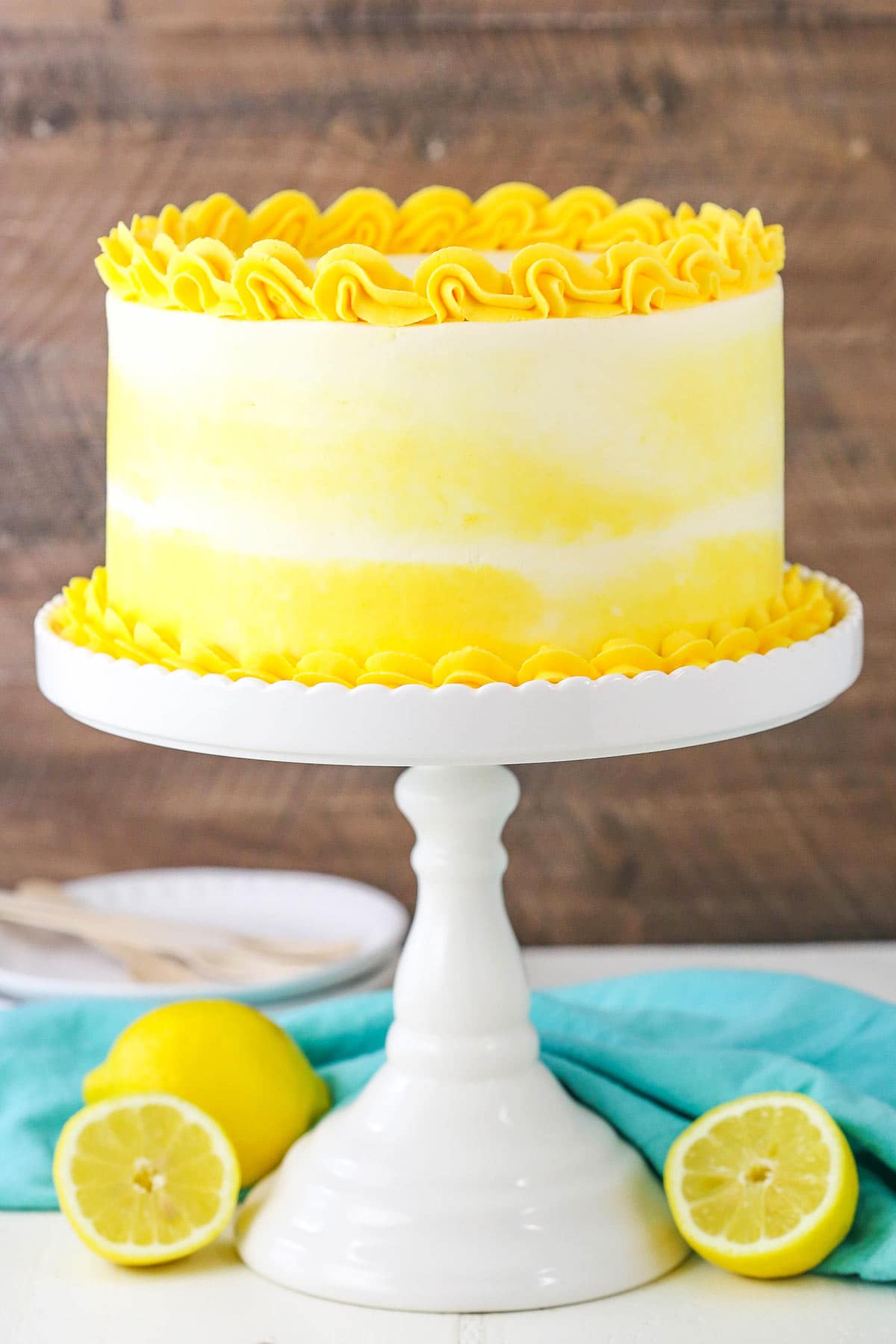
Assembling Your Cake
Now that everything is prepped and ready to go, let’s get to the exciting part – putting it all together!
- Cut Cakes & Gather Fillings: The cake layers should be pretty flat, but if there’s a dome, trim the tops of the cakes so they are flat. Cut each cake in half, so that you end up with 6 layers of cake. Get the lemon curd and bavarian cream from the fridge and stir them until smooth. The bavarian cream may need a little hand whisking to work out any lumps.
- Start Layering: Place the first layer of cake on a serving platter. Pipe a small dam of frosting around the outer edge. Fill the dam with 1/3 of the bavarian cream. Place the second layer of cake on top of the cream. The cake layers are very tender, so I recommend using a cake lifter.
- Continue Layering: Add another dam of frosting around the out edge of the cake. Fill the dam with about half of the lemon curd. Repeat with another layer of cake, a dam of frosting and 1/3 of the bavarian cream. Then repeat with another layer, a dam and 1/2 of the lemon curd.
- Finish Layering: Repeat with the another layer of cake, a dam of frosting and the remaining 1/3 of the bavarian cream. Add the final layer of cake on top, then frost the outside of the cake with a crumb coat.
- Chill: Refrigerate for at least 2-3 hours for the cake to firm up.
- Frost & Serve: Frost the outside of the cake and decorate as you wish. Refrigerate the lemon layer cake until you’re ready to serve.
Tips for Making Lemon Layer Cake
With a cake this luxurious, it never hurts to have some extra recipe tips and tricks. I’ve got you covered!
- Make-Ahead Option: If you want to start working on this cake a day in advance, you can prepare both of the fillings ahead of time and store them in airtight containers in the fridge. Just give them an extra good stir before assembling the cake so they’re nice and smooth.
- Use a Cake Lifter: This cake is super soft and tender, which is amazing in every way, but it does come with some difficulty in terms of assembly. I recommend using a cake lifter to move the thin layers around without breaking them.
- Don’t Forget the Dams: The dams of frosting along the edges of the filling layers are super important. They hold everything in place so that nothing comes spilling out down the sides, so make sure you include them and that your frosting is thick enough to stay in place.
- Use a crumb coat: If you’re new to making layer cakes, you might not know what a crumb coat is. Basically, it’s a thin layer of frosting that goes over the sides and the top of the cake to catch any loose cake crumbs. Then when the cake is chilled those crumbs get set in place providing a smooth surface to apply the outer layer of frosting.
- Easy Decorating Idea: Roughly frost the cake on top of the crumb coat, then color the remaining frosting a nice shade of yellow. Place little blobs of the yellow frosting around the cake, then finish smoothing out the sides and you’ve got a lovely watercolor design going on. I piped the rest of the yellow buttercream around the edges and I love the final look! So bright, summery and lemon-y.
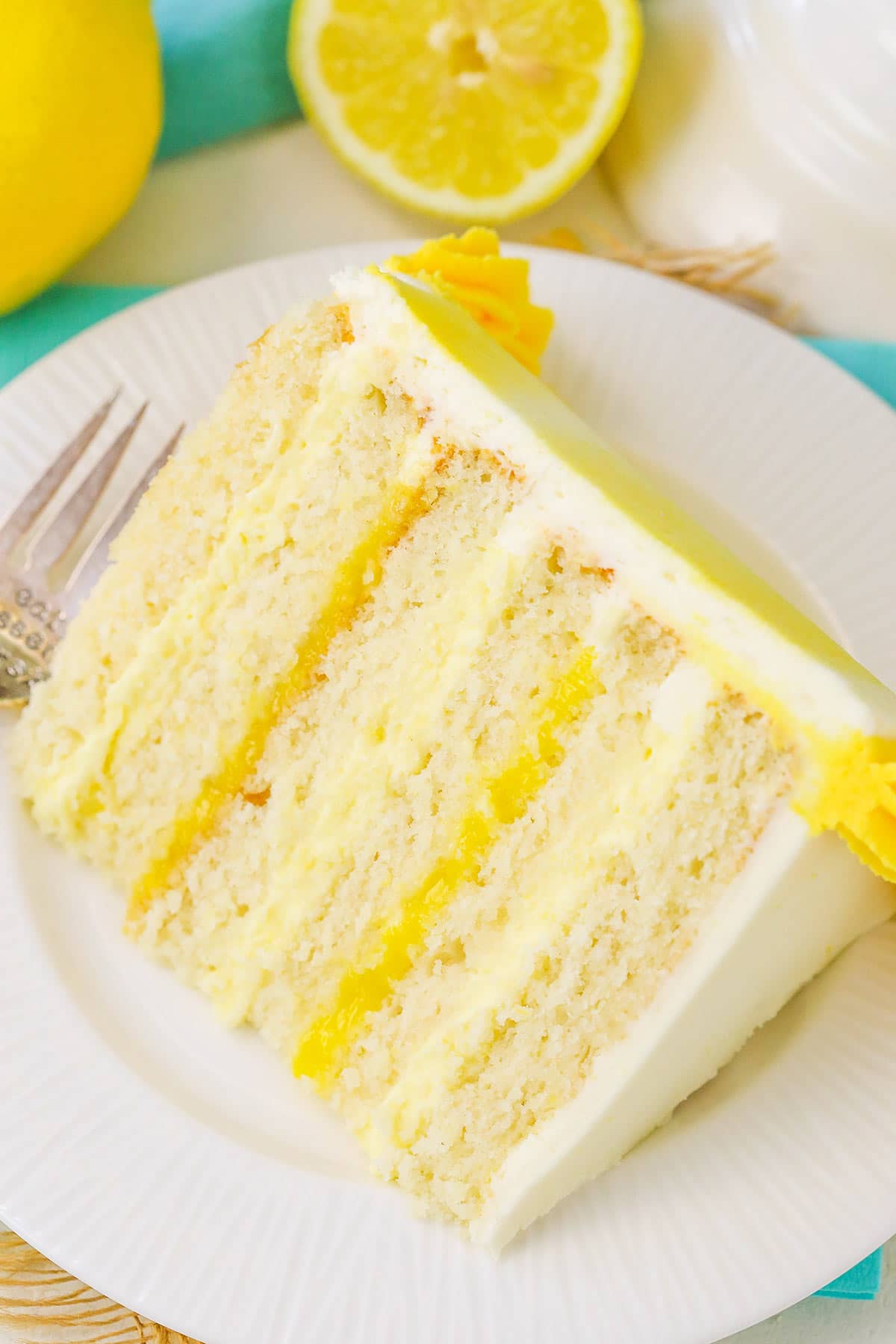
How to Store Frosted Cake
This cake should be stored in an airtight container in the fridge. If you can’t fit the whole leftover cake in a container, cut it into slices and store them separately. Enjoy leftovers within 3-4 days for the best results.
Can I Freeze Lemon Layer Cake?
You can! Though I recommend freezing individual slices. To freeze your lemon cake, wrap it tightly in a layer of plastic wrap and a layer of aluminum foil. Thaw frozen cake overnight in the fridge before enjoying.
Watch How To Make It
Print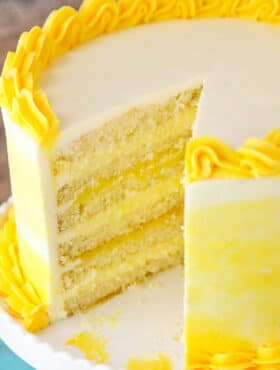
The Ultimate Lemon Layer Cake
- Prep Time: 1 hour 45 minutes
- Cook Time: 1 hour 10 minutes
- Total Time: 7 hours, 55 minutes
- Yield: 12-14 Slices
- Category: Dessert
- Method: Oven
- Cuisine: American
Description
Made with moist and fluffy cake, a velvety buttercream frosting, silky bavarian cream and a zesty curd filling, this is The Ultimate Lemon Layer Cake! You won’t find this much fresh lemon flavor in any other dessert.
Ingredients
For the Lemon Cake
- 3 cups (390g) all-purpose flour
- 1/4 tsp baking soda
- 2 3/4 tsp baking powder
- 1 tsp salt
- 1 1/2 cups (336g) unsalted butter, room temperature
- 2 cups (414g) sugar
- 4 egg whites
- 1 1/2 tsp vanilla extract
- 1 1/4 cups (300ml) milk
- 1/4 cup lemon juice
- 2 tbsp lemon zest
For the Lemon Buttercream
- 2 1/4 cups (504g) unsalted butter, room temperature
- 9 1/2 cups (1093g) powdered sugar
- 1/2 tsp salt
- 1 tsp vanilla extract
- 2 tsp lemon zest
- 2–3 tbsp lemon juice
- Yellow gel icing color
For the Lemon Curd
- 1/4 cup (60ml) fresh lemon juice (about 1–2 lemons)
- 2 tsp finely grated lemon zest
- 1/3 cup (69g) sugar
- 4 egg yolks
- 2 tbsp (28g) salted butter
For the Lemon Bavarian Cream
- 1 1/2 tsp powdered gelatin
- 4 1/2 tbsp (68ml) lemon juice
- 3 egg yolks
- 1 3/4 cup (420ml) heavy whipping cream, divided
- 3 tbsp (26g) sugar
- 3/4 tsp vanilla extract
- 1 tbsp lemon zest
- 1/2 cup (58g) powdered sugar
Instructions
Make the Cake
- Preheat the oven to 350°F (176°C). Line three 8-inch cake pans with parchment paper in the bottom and grease the sides.
Combine the flour, baking soda, baking powder and salt in a medium sized bowl. Set aside. - Cream the butter and sugar in a large mixer bowl on medium speed for about 2-3 minutes, until light and fluffy.
- Add the egg whites and vanilla extract and mix until well combined. Scrape down the sides of the bowl, as needed, to make sure everything is combined.
- Add about one-third of the flour mixture to the batter and beat on medium speed until incorporated.
- Add about half of the milk and the lemon juice and zest and beat on medium speed until incorporated.
- Continue alternating adding dry and wet ingredients, scraping down the sides of the bowl as needed, and beating until incorporated after each addition. There should be three total additions of dry ingredients and two total additions of milk. End with the dry ingredients.
- Divide the batter evenly between the cake pans.
- Bake the cakes for 25-30 minutes, or until a toothpick inserted into the middle of the cakes comes out clean. Don’t be alarmed if the tops are a little browned, that is normal.
- Remove the cakes from the oven and allow to cool for 1-2 minutes, then remove to a cooling rack to cool completely.
Make the Buttercream
- Add the butter to a large mixer bowl and beat until smooth.
- Slowly add about half of the powdered sugar, mixing until well combined and smooth.
- Add the salt, vanilla, lemon zest and lemon juice and mix until well combined and smooth.
- Slowly add the remaining powdered sugar and mix until well combined and smooth.
- Add additional lemon juice, if needed, to thin out the frosting.
Make the Curd
- Combine all the ingredients in a double boiler (or in a metal bowl over a pot of simmering water). Heat while whisking constantly until mixture thickens and reaches 170-180 degrees, or coats the back of a spoon.
- Pour the lemon curd into a heat proof bowl, cover with clear wrap pressed onto the the top of the curd to avoid a film developing, and refrigerate until cold and firm.
Make the Bavarian Cream
- In a small bowl, sprinkle the gelatin onto the lemon juice and set aside.
- In a medium bowl, whisk the egg yolks together and set aside.
- Add 3/4 cup of the the heavy whipping cream, sugar, vanilla extract, lemon zest to a large saucepan and heat over medium heat until warm.
- Remove the cream mixture from heat and slowly pour the hot cream into the eggs to temper them.
- Add the egg and cream mixture back into the saucepan and return to the heat. Continue cooking over medium heat until the mixture is thick enough to coat the back of a spoon, or reaches about 160°F. It should happen fairly quickly.
- Add the gelatin mixture to the hot cream and stir until smooth.
- Pour the custard into another bowl and set that bowl inside another bowl over ice. Allow to cool to room temperature.
- While the custard cools, add the remaining cup of heavy whipping cream and powdered sugar to a large mixer bowl and whisk on high speed until stiff peaks form.
- When the custard is ready, gently fold the whipped cream into the custard. Be sure it’s at least room temperature, so the whipped cream doesn’t wilt/melt.
Assemble
- The cake layers should be pretty flat, but if there’s a dome, trim the tops of the cakes so they are flat. Cut each cake in half, so that you end up with 6 layers of cake. Get the lemon curd and bavarian cream from the fridge and stir them until smooth. The bavarian cream may need a little hand whisking to work out any lumps.
- Place the first layer of cake on a serving platter. Pipe a small dam of frosting around the outer edge.
- Fill the dam with 1/3 of the bavarian cream.
- Place the second layer of cake on top of the cream. The cake layers are very tender, so I recommend using a cake lifter.
- Add another dam of frosting around the out edge of the cake. Fill the dam with about half of the lemon curd.
- Repeat with another layer of cake, dam of frosting and 1/3 of the bavarian cream.
- Repeat with another layer of cake, dam of frosting and 1/2 of the lemon curd.
- Repeat with the another layer of cake, dam of frosting and remaining 1/3 of the bavarian cream.
- Add the final layer of cake on top, then frost the outside of the cake with a crumb coat and refrigerate for at least 2-3 hours for the cake to firm up.
- Frost the outside of the cake and decorate as you wish. To create the watercolor look I used, frost the outside of the cake roughly, then color the remaining frosting with yellow gel icing color. Place a few blobs of yellow frosting around the outside of the cake, then smooth out the cake a few more times to spread the yellow frosting around and create the effect. Use the remaining yellow frosting to pipe around the edges.
- Refrigerate the cake until ready to serve. The cake is best when stored in an air tight container and eaten within 3-4 days.
Notes
You’ll need about 5 hours total of cooling time.
Nutrition
- Serving Size: 1 Slice
- Calories: 1144
- Sugar: 111.1 g
- Sodium: 346.6 mg
- Fat: 65.6 g
- Carbohydrates: 135 g
- Protein: 9.1 g
- Cholesterol: 264.2 mg
This post contains affiliate links.

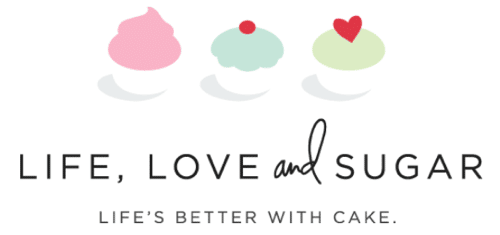
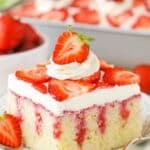
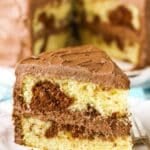

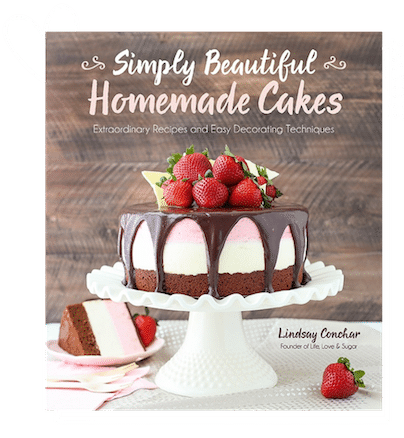
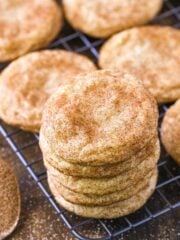
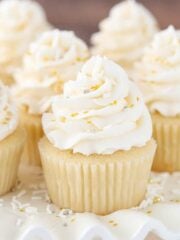
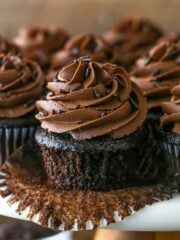

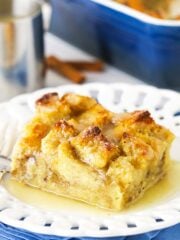
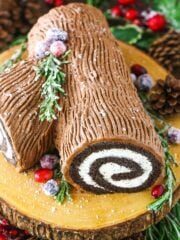
I cheated and used 2 boxes of white cake mix in two 10” pans and cut into 4 layers. Followed directions for rest of cake and it came out great. Delicious!!!!
I’m so glad you enjoyed it!
You say 390g for the flour, is that what you weighed when measuring the 3 cups, or is that part of the baker’s percentage for the recipe?
I need to know whether you go by weight or volume. If you go by volume then weighing your volumetric measurements is not going to be right. There’s a difference. This recipe looks amazing, I’m just reluctant to make it because I’d rather use a recipe that uses baker’s percentages.
Thanks!
I don’t use Baker‘s percentage. I had never heard of that but googled it and I can tell you I don’t do that. I can also tell you that this is a great recipe, and the weight amounts are correct, because that’s what I use.
I’m trying to figure out when I weigh flour, all-purpose flour, I get something different other than (390 g); I get less than that! My scale gives me a measurement of (370 g), but I do the lightly spoon method and sweep the excess flour off the top and don’t pack the flour and pour it into a clean mixing bowl on top of my scale and it weighs it, it comes out (370 g) or about 13 oz of all-purpose flour.
That’s the tough part about using cups. Everyone can get something different. I use the weight measurements, so if you use the weights listed, you should be good.
Awesome! Thank you for clarifying. We Americans don’t know what baker’s percentages are lol. I stumbled upon them when I started baking sourdough bread. The volumetric measurements were always off, so I found and used baker’s percentages and never looked back. I created my own recipes using them or searched for European recipes since I knew they only used the metric system.
I have no clue what the percentages would be for sweets though. I feel a lot better knowing you weigh them, and I appreciate you commenting back and clarifying that.
I will most definitely make this!
If a recipe calls for 3 cups of all purpose flour, 1): A.P. flour weighs more than Cake flour, like 0.4 or 0.5 oz more than plain flour; however, if you weigh a cup of plain flour, or A.P. flour, then take that weight of that cup of flour and multiply it by 3. So, for me, 3 cups of flour comes out to be about 13 oz, or to convert the oz into grams, you multiply the weight in oz by how many grams makes up 1 oz. I.e.: there are 28.35 grams in 1 oz of mass. (28.35 * 13 ≈ 370 g)! For the best results when measuring flour, lightly spoon the flour into a dry measuring cup, and avoid packing your flour in the cup, and do the sweeping and level method after measuring each cup.
As a baker, I use Baker’s percentages when I make my bread – sourdough, croissants, artisan, etc.
For everything else, I use weight measurements. This should cause you no problems. Just weigh out the ingredients the way they are, and it will come out just fine. I suppose you could figure out your own bakers percentages for this, but, to what purpose, by trade, I am a pastry chef.
I have made this recipe before and it’s wonderful! Question. I am going to a party and want to make this cake. The problem is it’s a 6 hour drive for us and I’m wondering how to transport the cake. Can I freeze the whole cake finished and transport it that way to eat the next day? Or do you have a better suggestion…
I’m so glad you enjoyed the cake! Freezing it sounds like a smart way to go, the only thing is that gelatin doesn’t typically freeze fully and can break down when you thaw it. The cream layer may not do so well.
When I say this recipe was a winner, I mean Olympic gold! My family makes a lemon cake for my mom’s birthday, and after hours of research to find this year’s recipe, I finally decided on this one.
When it was finished (tip: you’re going to wonder if three rounds is enough. IT’S ENOUGH!), we brought it with us to the restaurant, where not ONLY was it praised by the guests, but even the staff (who asked for a slice)! In fact, the waitress asked if we were planning to open a bakery. I would definitely recommend this recipe if you’re looking for a lemon cake!
Awesome! I’m so glad to hear it was a big hit!
I don’t understand the crumb coat.
A crumb coat is a thin layer of frosting that goes on before your final layer. It catches any crumbs and keeps them in the crumb coat (that thin layer) so that you don’t have crumbs in your final layer of frosting. It’s not something you have to do, but it can help your frosting look nicer in the end.
Is this cake dense like your homemade fresh strawberry cake?
I’d say it’s not quite as dense.
Can you make this cake without the cream? Just the lemon curd in between layers and of course the buttercream frosting. Love lemon flavor. Sounds delicious!
Yes, definitely. You may just want to make a little more lemon curd if you’re going to have the same number of layers.
Making this for Easter! I see you recommend not using 9in cake pans as layers would be too thin. In the recipe you also mention slicing layers in two. Could I double the lemon cake recipe and use the 9in pans? I’m terrible at slicing cake layers evenly so trying to find a work around.
To clarify, I would bake 6 thin layers separately so that I wouldn’t have to cut layers.
It should work fine. The layers will be a little thicker if you double the recipe. I often do 1.5 recipes worth for 9 inch pans, but doubling might be good so that they layers aren’t quite so thin and hard to work with. If you have a cake lifter or something, that would help with moving them around.
It’s just how this particular cake is made. I have some other cakes that use whole eggs that you could swap in, if you prefer. I just really like the texture and density of this particular cake with such thin layers.
Can I make this in 9in pans?
Sure, the layers will just be quite thin if you do three. You might want to do just 2.
Would 9in cake pans work ok?
Your cake layers would be too thin to be able to torte and have the same amount of filling layers. You may want to do 2 1/2 recipes worth.
Coming back to make this cake for the second time, for a friend’s birthday. This cake is the best cake I have ever made. And I love to bake cakes. It is so delicious and flavourful, and fun to make! Thank you so much for this recipe!
I’m so glad to hear that! So glad you enjoy it!